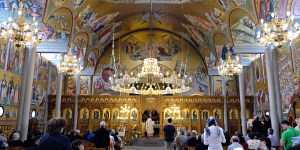Three fragments of the Parthenon, the Ancient Greek temple located in Athens, Greece, will be returning from the Vatican to their land of origin. On March 7, 2023, the Vatican officially donated these sculptures, which had been held at the Vatican Museums since the 19th century, to the Mediterranean country.
The Vatican press office announced the initiative on December 16, 2022, saying Pope Francis had decided to donate these fragments as “as a concrete sign of the sincere desire to continue on the ecumenical journey of witnessing the Truth.”
The pieces were part of decorative sculptures made by the Ancient Greek sculptor Phidias and had been exhibited in the Parthenon, the temple built by the Greek politician Pericles (447- 432 BC) on the Athenian Acropolis.
On March 7, the president of the Governorate of Vatican City State, Cardinal Fernando Vérgez Alzaga, signed the agreement finalizing the transfer at a private event at the Vatican Museums. A representative of the Christian Orthodox Archbishop of Athens and all of Greece, His Beatitude Ieronymos II, was present, as well as the Greek Minister of Culture and the Director of the Vatican Museums.
A ceremony is planned in Athens on March 24, when the pieces are expected to arrive.

The history of the fragments
One of the fragments shows part of a horse’s head and is from the western side of the building, the Vatican Museums’ website explains. The animal is supposed to be the fourth horse pulling the chariot of Athena, the Ancient Greek goddess of wisdom and warfare.
The second fragment shows the head of a boy, whose body would have been carrying a tray of cakes intended for offerings to Athena. The last fragment is a bearded male head from the southern side of the building where there would have been a depiction of a battle between Lapiths and Centaurs.
The German archaeologist Hermine Speier (1898-1989) was the first to unearth the horse’s head, which had laid unidentified in the basements of the Vatican’s Apostolic Palace. The French book “Women of the Popes” (Femmes de papes by Bénédicte Lutaud), describes the passionate research of this German academic who spent 1946 and 1947 trying to identify the sculpture. Since Speier's discovery, hundreds of thousands of visitors have been able to see these ancient fragments among the collections of the Museums.
The importance of ecumenical relations
The Pope’s initiative to return these fragments came after several episodes of rapprochement, although cautious, between the Catholic Church and the Greek Orthodox Church. The Pontiff and the Archbishop have met twice: in 2016 in Lesbos and more recently during Francis’ trip to Greece in December 2021.
During this last meeting, in an Orthodox land still traumatized by the attitude of Catholics at certain moments in history, the Pope was welcomed with a certain coolness in front of the Orthodox archbishopric of Athens. Ieronymos II suggested in his speech that the Pontiff should have the courage and honesty to consider the omissions of his predecessors, especially during the Ottoman rule in 1821 where there was civil resistance. The Western powers and the Vatican did not support the civil and civic resistance movement of the Greeks under Ottoman rule.
In front of Ieronymos II, the Pope acknowledged "shamefully" the actions of the Catholic Church and asked "forgiveness" to his Orthodox brothers for the "mistakes" committed against them in the past.
He invited Christians to build on their common roots, to forget the "prejudices of the past" and look with “new eyes” at their relations.



